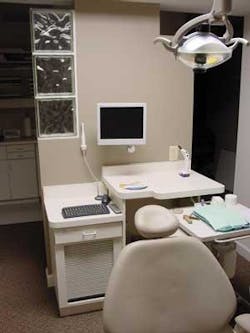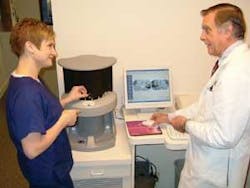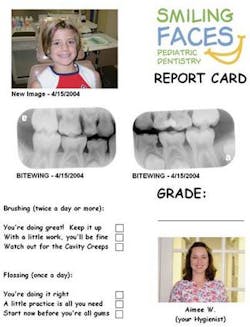Practice makes perfect: Making the transition to digital
By Trent Watkins, Manager, Smiling Faces Pediatric Dentistry - www.smilingfacesdental.com
What does digitizing your practice mean? For some dentists, it might be loading their financials into a business program for better practice analysis or perhaps purchasing scheduling software to help organize their daily calendar. For our pediatric practice, digitizing meant change - a change in how we did everything.
Our practice has always had a penchant for technology but, for the most part, we just purchased items that helped us maintain the status quo. Like many offices, we lived by the “if it isn’t broke, don’t fix it” approach. Unfortunately, our hardware and dental practice-management software were both Macintosh-based, and development had virtually ceased. Fundamental requirements, such as accounting and scheduling, were addressed, but we were not going to reach this new “digital” reality with our existing equipment. It was time for a change.
Where to start?
This is the primary question for any practice looking to “go digital.” At the time of our decision, we were toying with the idea of digital imaging. Digital radiography was still on the bleeding edge, and so were the systems designed to facilitate practice integration. Instead of looking for a digital imaging add-on, we decided to redefine the scope of the project. We were going to need an entirely new hardware and software configuration. Where to start, indeed?
As with any big purchase, getting started requires planning and research. Magazines, trade journals, and peers can provide sound advice and, of course, your local dental technology representatives will be more than willing to assist in the decision-making process. We spent a lot of time researching all of the above and spoke with anyone who would talk to us, then we did nothing. We spent another two years waiting and debating before we finally felt we had a solid grasp of the project and were ready to get our arms around it.
After years of researching, searching for the best systems, and narrowing down the field, our decision came down to two main questions - will the digital imaging technology give us the flexible functionality we need, and where will the support we need come from?
One source solution
Initially, we considered purchasing computers from a retail supplier, and then purchasing the technology necessary to make us “digital” from various vendors. However, separation of hardware, network, and software support on our previous system was a constant source of displeasure. Frequent finger-pointing was often the response from the multiple vendors - and now we would be adding an imaging capability into the mix!
Fortunately, we realized that we could eliminate the headaches by selecting a technology company that specializes in the entire technology solution, including the hardware and software platform. From a cost/benefit standpoint, purchasing a whole new system may not be necessary for all dental practices; however, for our practice this decision to go with a complete solution from Patterson - including digital radiography (ScanX), hardware and practice-management and clinical software (Patterson EagleSoft) - definitely helped make the transition to the new equipment that much easier (see photo at left). In addition, the supplier we selected treated support as an educational tool. This allowed our excellent staff to learn the product quickly and maintain a high level of patient focus. It took a while to get used to the new systems and procedures but, once that happened, we really started to maximize our potential.
Fine-tuning patient impact
As with any area of dentistry, educating the patient is always an important task. In the pediatric arena, we often focus on preventive measures such as a child’s brushing habits. While traditional methods such as demonstration are still important, the digital medium allows the dentist and hygienist to be even more effective. Our new system has provided us this opportunity through advanced imaging technologies.
Digital X-rays and imaging are exemplary tools for initiating a greater focus on patient hygiene. With our system, we have the ability to manipulate the images and have used this to create something meaningful for our patients and their parents to take home. We call this our “Report Card,” a custom document which contains a patient image and X-rays from each visit.
During a patient’s visit, the hygienist will take all the necessary images and print out the document, then she will write a few brief encouraging comments and/or items on which the patient should focus. Not only do the children enjoy being photographed, but they also get to take part of this experience home with them. This keeps all family members involved with the patient’s progress - even those who aren’t present during the visit. The Report Card empowers our staff to encourage good home care from outside the walls of the practice.
Over the years, we have tried various iterations of the Report Card, but this type of repeatable process was simply too difficult to implement prior to going digital. With our new system, it has become a routine part of each patient’s hygiene visit.
Through careful planning and research, we selected the right technology that offers the flexibility and support we need. We are able to practice the same quality dentistry as before, but are now able to impact our patients and help them evaluate their oral health care in a whole new way. Digitizing your practice really can change the way you do things for the better.



